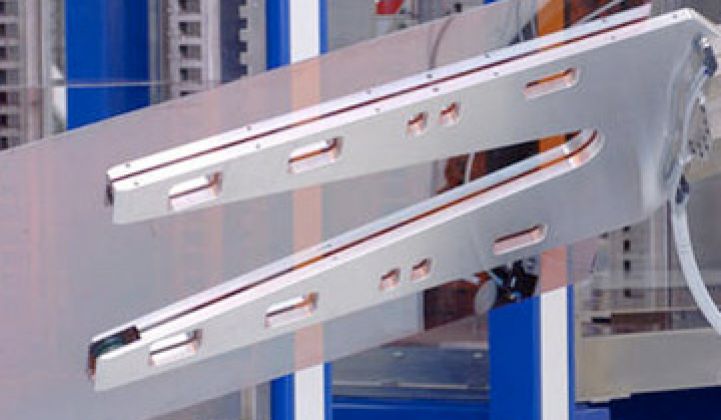Solar panels and solar farms are the visible face of solar. But behind all of those products and deployments is an enormous infrastructure of materials (see our BOM report), factories (built by M+W Zander or CH2HLL or Bechtel) as well as an enormous amount of factory automation.
Builders of solar panels need to focus on technology processes, assembling, testing and shipping their product. The minutiae of the equipment used to make these products materialize are important, but they are not the core focus of these firms.
If you tour the factory floor of a modern solar plant, you'll likely find a paucity of people and a lot of automated equipment. Ever wonder where that equipment comes from and how it gets made? Standard machinery for commodity-level photovoltaics comes from Applied Materials, Oerlikon, Roth & Rau or others. But what about custom equipment that one might see in the new breed of photovoltaic firms like First Solar, Solyndra, MiaSole, NanoSolar or Solaria? There is no standard tool set for CIGS or CdTe or CPV or even a-Si. Where do manufacturing tools for those firms come from? They can't be bought off the shelf.
Companies are faced with the choice of attempting to build everything themselves, reinventing the wheel, and risking a loss of focus on their core product. Or they can outsource this part of their business to an expert. In the case of custom solar manufacturing equipment, one of those experts is Schiller Automation.
I spoke with Schiller's Mark Willingham about the firm. Historically, their main product was custom automation, but they've recently moved to fab automation. That might bring up images of big robotic arms, but the company's equipment moves substrates as well as full glass substrates. Willingham considers the firm an automation company, not a robot company.
Willingham said that Schiller was "[t]he biggest and most accomplished company in solar that people are not familiar with."
Schiller already has already automated eight 50-megawatt fabs with a set of mature thin film solutions involving movement, fab logistics, and line control software for data entry into the customer's MES system -- making sure the proper substrates are inserted into the proper process step at the proper time.
The 30-year-old, 300-employee firm is privately held, headquartered in Germany, and has been a consistent moneymaker, according to Willingham.
Schiller "cut their teeth in amorphous silicon" and although they're "working under NDA with more than one CdTe player and more than one CIGS player, including flexible CIGS," Wilingham stressed that "a-Si is not dead yet."
Schiller has thin film fab/equipment handling 540 megawatts of throughput and contracts for another 410 megawatts to be installed this year.
The firm has traditionally worked on solar cell production, but is now working on the back end -- the module side.
This type of automation certainly reduces the cost of labor, but it also ensures quality and improves throughput.
Other players in this market include Owens Design, Reis Robotics, Jonas & Redmann, ABB Robotics, and Solar Fabrik.



